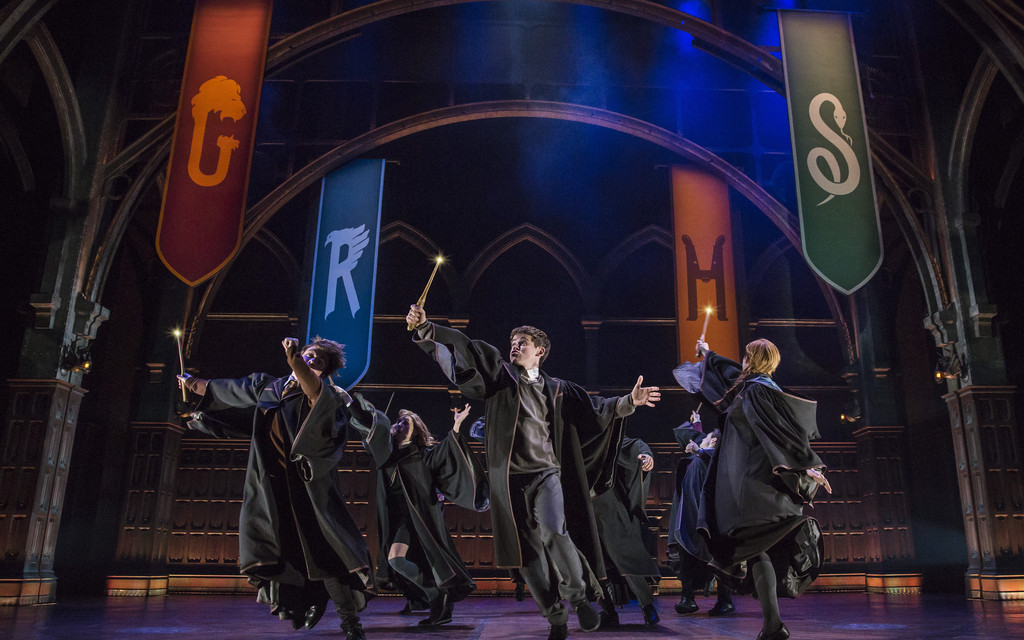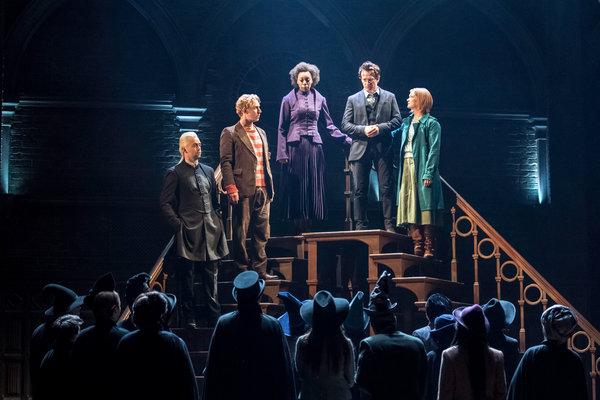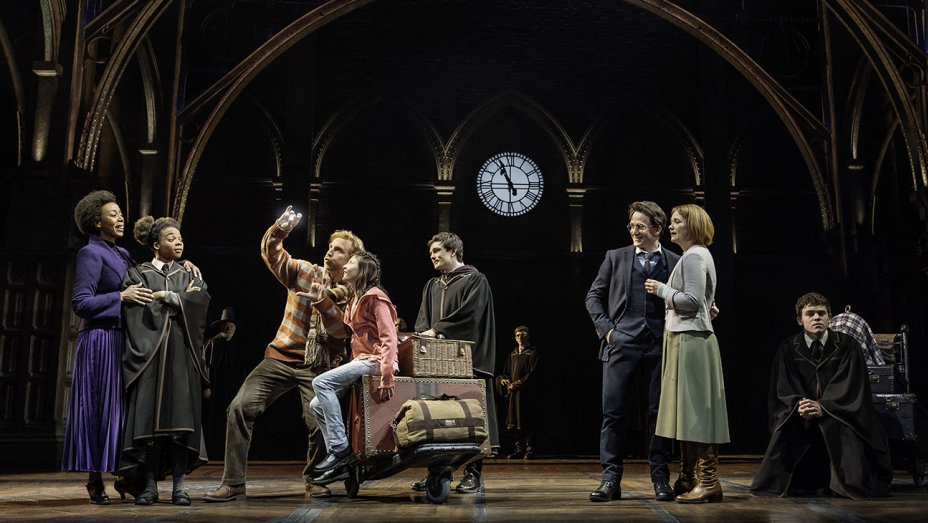by Dancin' Dan

You'd be forgiven for thinking, as I did way back in 2013 when it was first revealed a Harry Potter play was in development, that Harry Potter and the Cursed Child was going to be an unmitigated disaster. The last time a stage show based on a billion-dollar book and film franchise requiring inspired technical elements opened on Broadway, it was Julie Taymor's legendarily disastrous Spider-Man: Turn Off The Dark, a production plagued by poor decisions and bad luck from the start. You'd even be forgiven for still being skeptical when Cursed Child opened in London in 2016, and reports from the West End were nearly all rapturous. After all, Rowling and Potter are national treasures, so surely the Brits might have been blowing this a bit out of proportion, right?
Well, dear reader, I'm here to tell you to believe the hype...
I've seen the full production of Cursed Child - told in two two-act plays seen either on the same day or on consecutive nights - twice now, once for the full-day "marathon" seated in the gorgeously renovated Lyric Theater's balcony, and once from the front row of the orchestra over the course of this past Thursday and Friday. Not only does the play hold up to a great deal of scrutiny, but the magic of Rowling's books has survived the transfer to the stage more fully than you could have reasonably hoped for.
Cursed Child begins where the epilogue of the last Harry Potter book (Harry Potter and the Deathly Hallows) left off: Harry, his wife Ginny, and his best friends Ron and Hermione are adults, and are sending their children off to Hogwarts School for Witchcraft and Wizardry. This is the first year for both Harry's middle child, Albus Severus Potter, and Ron and Hermione's daughter Rose Granger-Weasley. Albus is a nervous child - nervous about going to Hogwarts, nervous about living up to his older brother James, nervous about living up to his own family name. He finds a kindred spirit in one Scorpius Malfoy, son of Harry's school bully Draco. And that's all the plot details you'll get, because this is truly an experience that gains something from not knowing what's coming next. I will say, however, that the play's exploration of what it is like to be the survivor of incredible trauma, and to be the child of someone who is a piece of living history, is handled with great care and some sharp insight.

But the script is far from the best part of Cursed Child. That would be the jaw-dropping production values and staging. The costumes by Katrina Lindsay are quite covetable, especially the impossibly voluminous wizard's robes that the cast swish around in quite dramatically. Imogen Heap's musical score strikes the perfect magical tone, alternately whimsical and foreboding. The set design by Christine Jones is surprisingly minimalistic, but when paired with Neil Austin's lighting design, it makes some miraculous transformations. And about that lighting design: It is GENIUS. The play is packed full of outstanding visual effects (most of which are impossible to figure out how they were achieved when you're sitting up close), which marks this production as the most cinematic experience you'll have on Broadway. The entire design team have pulled out all the stops to make this an experience you will never forget.
At the helm of it all is John Tiffany, who takes great pains to make sure the characters and the emotional through-lines of the play are never lost amidst the spectacle. He keeps everything moving at just the right pace, and stages a couple of deeply moving scenes that contain no dialogue at all. Though the script can sometimes come across a bit like fan-service, "Harry Potter's greatest hits - LIVE ON STAGE," Tiffany and his tremendous cast ground the play in emotional truths, with performances that will leave you in tears by the end of part two. Olivier Award-winner Jamie Parker is ideal as the adult Harry, looking and sounding like how you would imagine Daniel Radcliffe will in another twenty years, and Noma Dumezweni (also an Olivier Award-winner) as Hermione and Paul Thornley as Ron likewise capture their characters' no-nonsense and freewheeling attitudes, respectively. But the true stars of the show are Sam Clemmett as Albus and Olivier Award-winner Anthony Boyle as Scorpius. The plot stems from their (mis)adventures at Hogwarts, and they create a believable friendship as a pair of outcasts. Boyle steals the show with his unique sense of comic timing and wonderfully elastic voice. In smaller roles, Poppy Miller as Ginny and Alex Price as Draco make strong impressions as well.

What this all adds up to is that Harry Potter and the Cursed Child truly earns the descriptor "magical," in large part because it embraces the magic of the theater so whole-heartedly. It is by turns hilarious and heart-wrenching, capable of both mystical grandeur and intimate feeling. It is a must for Potter fans, and an astounding time at the theater for everyone else (although you may want to arrive early to read the summary of the series plot, helpfully included in the program). Broadway hasn't seen anything like this in a long time, and it delivers.
But how should you see it? Having done it both ways, I'd suggest seeing both parts in one day (there is a nice long dinner break in between), especially since Part One ends on a MASSIVE cliffhanger. But seeing it on consecutive nights does not dilute the cumulative impact of the play and that's also the cheapest way to see Cursed Child: Every week, the show runs a lottery called the Friday Forty, giving you the chance to get one of the best seats in the house for $40 ($20 per ticket per part on consecutive nights). Considering how much laughter, tears, and magic Cursed Child provides, that may be the best deal on Broadway.